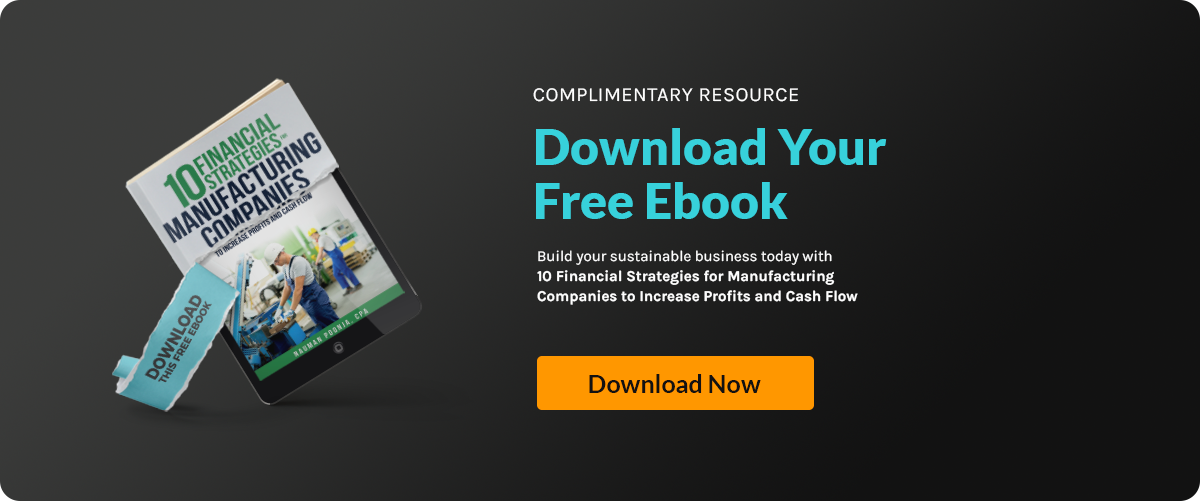Understanding how you track your finances is key to running a successful manufacturing business....
12 Traits Venture Capitalists Want in a Business Investment

Venture capital can transform a good business into a market leader—but only if you’re truly ready. For founders and manufacturing executives alike, securing VC funding requires more than just a compelling pitch. Investors today are sharp, data-driven, and risk-averse. They’re not buying dreams—they’re buying into traction, teams, and scalable systems. If you're preparing to raise capital, understanding what venture capitalists really want to see can dramatically improve your odds.
What Venture Capitalists Look For: 12 Must-Have Traits in Your Business
Securing venture capital isn’t just about having a great idea. It’s about building a business that demonstrates long-term value, scalability, and financial discipline. For manufacturing companies or startups looking to grow quickly, venture capital can be a powerful accelerator—but only if you meet the right criteria.
VCs are known for asking hard questions and digging deep into every part of your business. If you want to attract the right kind of investor, you need to be ready.
Here are 12 key things venture capitalists look for in an investment opportunity—plus a few common red flags that can quickly derail your pitch.
1. A Big Market Opportunity
Investors want to know that the total addressable market (TAM) is large enough to support massive growth. For manufacturers, this could mean entering an underserved niche with significant global demand or building a competitive edge in a mature but fragmented market.
If your solution only applies to a narrow audience, VCs may question whether the business can ever scale to provide a meaningful return.
2. Strong Founding Team
Your founding team is as important as your product. VCs want to see a leadership group with complementary skill sets, deep industry knowledge, and strong operational control.
They’ll also assess your leadership’s coachability, integrity, and history of execution. In many cases, they invest in teams—not just ideas. Leveraging a fractional CFO or specialized financial controller can also signal maturity and credibility.
3. Clear Competitive Advantage
Why you? What makes your business stand out from dozens of others in your space? VCs are looking for defensible advantages—such as proprietary technology, IP, supply chain dominance, or highly efficient processes.
In manufacturing, that might be a patented design, vertical integration, or lower cost-per-unit due to advanced automation.
4. Early Traction and Validation
Have you already proven that your business model works? This could be:
- Secured customer contracts
- Positive unit economics
- Letters of intent (LOIs) from buyers
- Repeat orders or pilot program results
Even if you're pre-revenue, showing validation from potential customers or industry stakeholders helps reduce perceived risk.
5. Scalable Business Model
VCs want businesses that can grow fast and efficiently. That doesn’t mean you need to be profitable on Day One, but it does mean having a model that scales well.
For example, can your production capacity be doubled without doubling costs? Have you automated your most time-consuming processes? Leveraging ERP systems or lean manufacturing techniques can support that narrative.
6. Financial Performance and Projections
Strong financials aren’t just for later-stage funding—they’re important from the start. VCs want to see well-organized historical financials, a solid understanding of cost volume profit analysis, and a clear path to profitability.
This includes:
- Revenue growth trends
- Gross margin consistency
- Cash flow position
- Burn rate and runway
They’ll also evaluate your assumptions—so make sure your projections are realistic and backed by industry benchmarks.
7. Use of Funds
How will you use the capital? VCs expect founders to be clear and disciplined here.
Typical uses include:
- Equipment purchases
- Team expansion
- Product development
- Marketing and sales scale-up
Break your use of funds into simple buckets (ex: 40% production, 30% team, 30% marketing) to show financial maturity. If investing in CapEx, link it to outcomes like reduced downtime or cost-per-unit savings. You can also highlight capital expenditure planning to reinforce the strategy.
8. Exit Potential
Venture capital is not a forever partnership. VCs need to know how—and when—they’ll see a return.
In manufacturing, exit scenarios might include:
- Acquisition by a larger supplier or OEM
- Private equity buyout
- Strategic merger or roll-up
The clearer your exit plan, the easier it is for investors to envision their ROI.
9. Customer Acquisition Strategy
Growth doesn’t happen by accident. VCs will want to see:
- How you acquire customers
- How much it costs (CAC)
- Your customer lifetime value (LTV)
If you’re running a B2B manufacturing business, this might involve trade shows, sales reps, distributor partnerships, or long-cycle relationship building. Include your customer funnel and conversion rates.
10. Operational Readiness
Can your company handle growth without breaking? This means having the right systems, people, and processes to deliver at scale.
Manufacturers can demonstrate this through:
- Quality control processes
- Supply chain partnerships
- Production tracking metrics
- Skilled labor capacity
Investors want to know that if they put money in, you’re ready to go.
11. Legal and Regulatory Compliance
Especially in manufacturing, compliance with OSHA, environmental laws, tax codes, and export regulations is essential. Any lapses here will scare off investors fast.
Be proactive. Show that you’ve done the work to manage regulatory risk—and even better, that you’ve taken steps to use compliance as a competitive advantage.
12. Alignment with VC Mandate
Not all venture capitalists are the same. Each fund has its own thesis, timeline, and preferred industries. Manufacturing companies need to target VCs who:
- Understand CapEx-heavy models
- Aren’t spooked by slower ramp-up
- Value long-term infrastructure plays
Research their portfolio, attend pitch events, and personalize your approach.
Common Red Flags That Turn Off Venture Capitalists
Even strong businesses can lose investor interest if certain red flags appear. These include:
- Overly optimistic projections with no basis in historical data
- Founders unwilling to dilute ownership but asking for large capital
- Poor record-keeping or unclear unit economics
- No clear plan for how capital will drive growth
Avoid these pitfalls by preparing early, cleaning up your financials, and aligning your story with investor expectations.
Final Thoughts: Make Your Business VC-Ready
If you want to attract serious venture capital, your business needs to be more than a good idea—it must be a well-oiled machine with scalable systems, measurable performance, and a strong team behind it.
At Accounovation, we help manufacturing businesses and startups build investor-ready financial models, implement strong controls, and plan for sustainable growth.
Let’s build a business investors want to fund. Contact Accounovation today and take the next step toward raising capital the right way.







